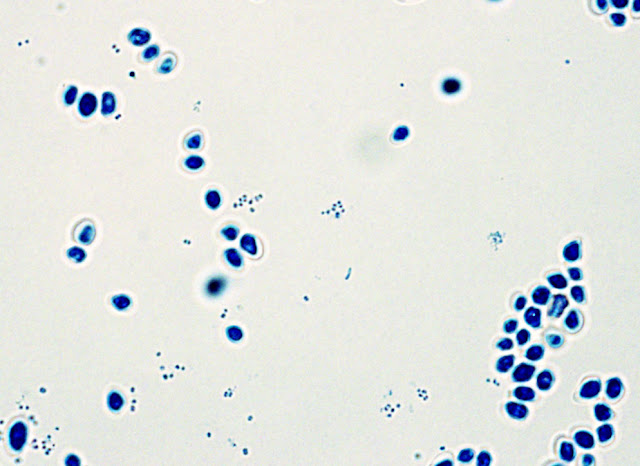This week I tasted a bottle of a quadrupel I brewed 2 months ago, and was surprised to discover a slight sourness. Not bad at all, it tasted a bit like Rodenbach, or Oerbier. However, it was not supposed to be there, which makes it an infection. I suppose this is what can happen if you brew during summer. I put a drop of the dregs under the microscope and found it to be a pediococcus infection. Luckily the taste is realy nice, so I won't pour it down the drain. Sometimes an infection can turn into something good. Which is of course how oud bruin and lambic cam to this world. Below a picture of the dregs. The big blue cells are yeast, the small ones pediococcus. The yeast and bacteria are of course not blue by nature. I died them to make it better visible.




